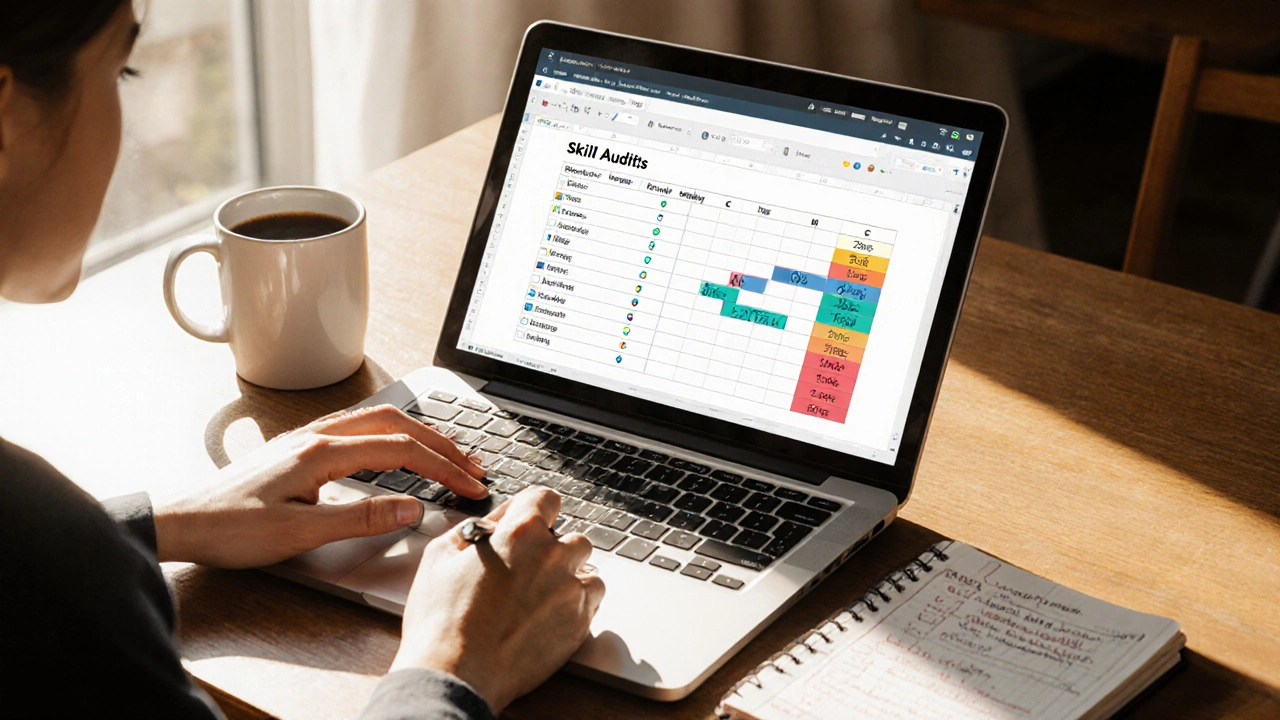Side Hustle Skill Matcher
Find your perfect side hustle match based on your strengths and interests. Answer these quick questions to discover which skills align best with profitable gigs.
Ever wondered which of your abilities could turn into a cash‑bringing side hustle? The good news is you probably already have marketable skills-you just need a quick audit and the right upskilling path.
Why a Skill Audit Is the First Step
Without a clear picture of what you can offer, you’ll waste time chasing ideas that don’t match your strengths. A focused skill audit helps you:
- Identify high‑demand abilities you already possess.
- Spot gaps that online courses can fill fast.
- Choose a hustle that fits your schedule and income goals.
Think of it as a personal inventory before you head to the market.
Core Skill Categories That Power Popular Side Hustles
Below are the six broad skill families that consistently power the most profitable side gigs. Most of them can be learned or sharpened through short‑form online courses.
- Freelancing is a work model where you sell your expertise directly to clients, often via platforms like Upwork or Fiverr.
- Digital marketing covers SEO, social media ads, email campaigns, and analytics.
- Graphic design involves creating visuals for brands, websites, and social media.
- Copywriting focuses on writing persuasive sales copy, blog posts, and ad scripts.
- Web development includes building sites, fixing bugs, and creating custom web apps.
- Video editing turns raw footage into polished content for YouTube, TikTok, and marketing campaigns.
Mapping Your Personal Strengths to a Hustle
Grab a pen or open a spreadsheet and answer these three quick questions:
- Which tasks do I enjoy doing most? (e.g., storytelling, solving puzzles, designing logos)
- What have I been praised for in past jobs or studies? (e.g., meeting deadlines, teaching concepts, coding)
- How much time can I commit each week?
Cross‑reference your answers with the skill categories above. If you love visual storytelling and have a knack for tools like Canva, graphic design is a natural fit. If you enjoy breaking down complex ideas for others, online tutoring or copywriting might be your sweet spot.

Top Online Courses to Fill the Gaps
Once you’ve chosen a target hustle, plug any skill gaps with a focused course. Below is a curated list of high‑rating, affordable options (most under $50, many free trials).
| Side hustle | Core skill | Avg hourly rate (USD) | Suggested online course |
|---|---|---|---|
| Freelance writing | Copywriting | 30‑45 | Coursera: Copywriting Basics |
| Social media manager | Digital marketing | 25‑40 | Udemy: Social Media Marketing Mastery |
| Logo & brand designer | Graphic design | 35‑60 | Skillshare: Graphic Design Basics |
| Website builder | Web development | 40‑70 | freeCodeCamp: Responsive Web Design |
| Video editor for creators | >Video editing | 30‑55 | LinkedIn Learning: Premiere Pro 2024 |
| Online tutor (any subject) | Teaching & communication | 20‑35 | edX: Online Teaching Essentials |
Launch Checklist: From Skill Audit to First Client
Follow this step‑by‑step plan to turn your identified skill into a paying side hustle within 30 days.
- Complete a self‑assessment. Use the three‑question framework above and rank each skill 1‑5.
- Select a niche. Narrow down to a specific market (e.g., “e‑commerce product photography” instead of generic photography).
- Take a targeted online course. Finish at least one of the recommended courses and build a portfolio piece.
- Set up a simple showcase. Create a one‑page site on Carrd or a Behance profile, embed your portfolio, and list services.
- Choose a gig platform. Sign up on Fiverr, Upwork, or a niche marketplace that matches your niche.
- Craft a compelling offer. Include a clear description, pricing tiers, and a short turnaround promise.
- Reach out to your network. Post a short announcement on LinkedIn or your local community group.
- Deliver the first project flawlessly. Treat it like a full‑time client, ask for a testimonial, and iterate.
After the first few gigs, refine your pricing, add more services, and scale via automation or subcontracting.

Common Pitfalls and How to Avoid Them
Even with the right skills, many newbies stumble. Here’s what to watch out for:
- Over‑promising. Set realistic delivery times; missing a deadline kills future business.
- Neglecting the portfolio. Clients choose you based on visible work. Keep your showcase fresh.
- Pricing too low. Low rates attract bargain hunters, not serious clients. Use the table above as a baseline.
- Skipping contracts. Even simple terms protect both parties and prevent scope creep.
Mini‑FAQ
How long does it take to start earning from a side hustle?
If you already have a marketable skill, you can land your first paying client in 2‑4 weeks after completing a short‑form online course and setting up a portfolio.
Do I need a business license for a side hustle?
In most Australian states, you can operate as a sole trader without a separate license, but you must register for an ABN and pay income tax on earnings.
What if I don’t have any of the listed skills?
Pick a skill that interests you and start with a beginner‑friendly course. For example, Google’s Digital Marketing Basics is free and opens doors to many entry‑level gigs.
How much can I realistically earn in the first three months?
Most beginners earn between $300 and $1,200 a month, depending on niche demand and hour commitment. Scaling to $2,500+ is common after building a solid portfolio.
Should I focus on one hustle or juggle multiple?
Start with one to master workflow and client communication. Once you have a repeatable process, you can add complementary services (e.g., graphic design + branding packages).
Ready to turn those hidden talents into extra cash? Pick the skill that sings to you, enroll in a focused online course, and follow the 30‑day launch checklist. Your side hustle journey starts now.



